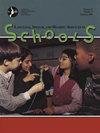Unveiling Tech Trends: Exploring Tech Usage Patterns in Young Cochlear Implant Recipients.
IF 2.9
3区 医学
Q1 AUDIOLOGY & SPEECH-LANGUAGE PATHOLOGY
Language Speech and Hearing Services in Schools
Pub Date : 2025-09-24
DOI:10.1044/2025_lshss-25-00073
引用次数: 0
Abstract
PURPOSE This study aimed to explore and compare technology usage patterns, preferences, and challenges among young cochlear implant (CI) users and typical hearing (TH) peers, focusing on daily technology interactions, communication behaviors, gaming habits, and music listening methods. METHOD The study included 108 participants, consisting of 54 CI users (Mage ± SD = 16.91 ± 3.77 years; 24 female) and 54 TH individuals (Mage ± SD: 19.17 ± 2.76 years; 29 female). CI users were unilateral, bilateral, or bimodal implant users with a minimum of 1 year of device experience. A specially designed questionnaire developed by researchers was employed to collect data on technology use, communication, gaming, demographic details, and device-specific information. A pilot study ensured content validity, followed by refinements and the implementation of a reliable 19-item survey employing a 5-point Likert scale. Data were collected online and in person, and analyses included descriptive statistics, Mann-Whitney U tests, chi-square tests, and correlation analyses. RESULTS Significant differences emerged between CI and TH groups in technology interaction patterns. TH participants scored higher in areas such as voice communication via phones, internet-based communication tools, and AI application usage (all p < .05), whereas CI users demonstrated higher engagement in gaming activities and preferred text-based over voice-based communication during gaming (all p < .05). Additionally, music listening methods differed significantly, with TH participants favoring wireless transmission and CI users preferring external speakers (p < .001). Older CI users showed higher engagement with various technologies, yet duration of CI use had limited correlation with technology utilization. CONCLUSIONS This study emphasizes the necessity of recognizing and addressing the unique technological preferences and challenges of young CI users. Enhancing accessibility features and providing targeted educational support can significantly improve their technological interactions and overall integration into the digital environment.揭示技术趋势:探索年轻人工耳蜗受者的技术使用模式。
目的本研究旨在探讨和比较年轻人工耳蜗(CI)使用者和正常听力(TH)同龄人的技术使用模式、偏好和挑战,重点关注日常技术交互、沟通行为、游戏习惯和音乐聆听方法。方法纳入108例受试者,其中CI使用者54例(Mage±SD = 16.91±3.77岁,女性24例),TH患者54例(Mage±SD: 19.17±2.76岁,女性29例)。CI使用者为单侧、双侧或双峰种植体使用者,至少有1年的设备使用经验。研究人员开发了一份特别设计的问卷,用于收集技术使用、通信、游戏、人口统计细节和设备特定信息的数据。一项初步研究确保了内容的有效性,随后进行了改进,并采用5分李克特量表进行了可靠的19项调查。数据从网上和现场收集,分析包括描述性统计、Mann-Whitney U检验、卡方检验和相关分析。结果CI组和TH组在技术交互模式上存在显著差异。TH参与者在通过电话进行语音通信、基于互联网的通信工具和AI应用程序使用等领域得分较高(均p < 0.05),而CI用户在游戏活动中表现出更高的参与度,并且在游戏过程中更喜欢基于文本而不是基于语音的通信(均p < 0.05)。此外,音乐聆听方法也存在显著差异,TH参与者更喜欢无线传输,而CI用户更喜欢外部扬声器(p < 0.001)。年龄较大的CI用户对各种技术表现出更高的参与度,但CI使用的持续时间与技术利用率的相关性有限。本研究强调了认识和解决年轻CI用户独特的技术偏好和挑战的必要性。增强可访问性特征和提供有针对性的教育支持可以显著改善它们的技术交互和与数字环境的整体集成。
本文章由计算机程序翻译,如有差异,请以英文原文为准。
求助全文
约1分钟内获得全文
求助全文
来源期刊

Language Speech and Hearing Services in Schools
Social Sciences-Linguistics and Language
CiteScore
4.40
自引率
12.50%
发文量
165
期刊介绍:
Mission: LSHSS publishes peer-reviewed research and other scholarly articles pertaining to the practice of audiology and speech-language pathology in the schools, focusing on children and adolescents. The journal is an international outlet for clinical research and is designed to promote development and analysis of approaches concerning the delivery of services to the school-aged population. LSHSS seeks to advance evidence-based practice by disseminating the results of new studies as well as providing a forum for critical reviews and meta-analyses of previously published work.
Scope: The broad field of audiology and speech-language pathology as practiced in schools, including aural rehabilitation; augmentative and alternative communication; childhood apraxia of speech; classroom acoustics; cognitive impairment; craniofacial disorders; fluency disorders; hearing-assistive technology; language disorders; literacy disorders including reading, writing, and spelling; motor speech disorders; speech sound disorders; swallowing, dysphagia, and feeding disorders; voice disorders.
 求助内容:
求助内容: 应助结果提醒方式:
应助结果提醒方式:


